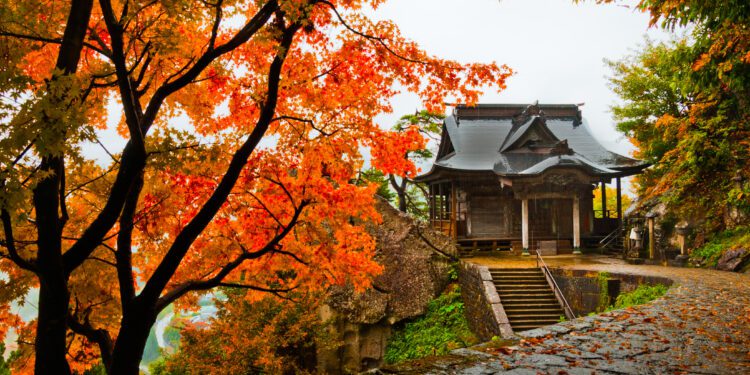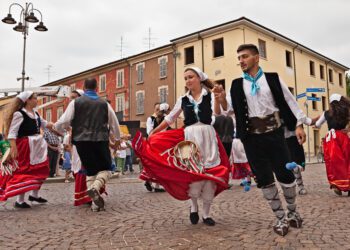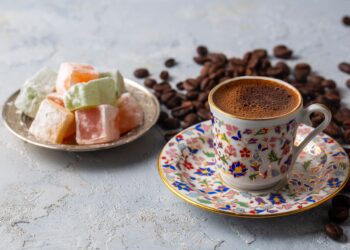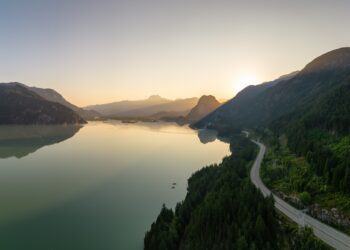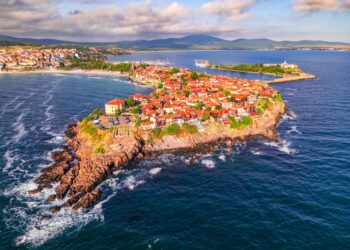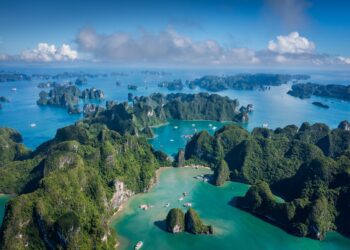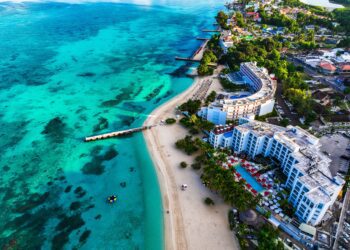Today, Tōhoku is becoming an increasingly popular dining destination in its own right, especially in the summer, when it attracts travelers and locals seeking respite from Japan’s humid, crowded metropolises. The pristine environment is ideal for harvesting and producing wagyu cattle, uni, rice, sake, peaches, tomatoes, apples — the list goes on. Local chefs turn it all into dazzling meals for a fraction of the price of a night out in a major city. It’s just the bullet train ticket for a countryside escape.
What is the food like in Tōhoku?
Spread across the northeasternmost portion of Honshu, Tōhoku consists of six prefectures: Akita, Aomori, Fukushima, Iwate, Miyagi, and Yamagata. They each produce their own culinary specialties, but there are some common threads.
Together, they produce 30 percent of Japan’s rice, with the most flavorful grains coming from Akita and Yamagata. Lots of that rice becomes sake; Fukushima Prefecture is nicknamed the “sake kingdom” because of its production, and you can visit feudal-era breweries in castle cities like Aizuwakamatsu.
There’s also a thriving fishing industry. The dramatic Sanriku coastline, which stretches about 100 miles along the Pacific Ocean in northeastern Tōhoku, is considered one of the world’s best fishing grounds because it lies at the crossroads of three mineral-rich currents.
Then there’s the produce: watermelon in Takizawa; aromatic peaches and apples in Fukushima; cherries, pears, and grapes in Yamagata; and strawberries in Miyagi (nicknamed “edible jewels” that sell for $10 USD a piece).
What to know before you go
Iwate wagyu: Wagyu beef, made from four specific breeds of Japanese cattle, is often referred to by its geographic origin, such as the world-renowned Kobe beef from Hyōgo Prefecture. Although its label may be less familiar internationally, Tōhoku’s Iwate beef has repeatedly received the top prize at the Tokyo Meat Market, an annual contest that draws the country’s leading ranchers, and Iwate wagyu from Japanese shorthorn cows is especially well-regarded.
Hoya: The shallows of Sanriku are home to an unusual ascidian called hoya, also known as a sea squirt or sea pineapple, which is found only in these waters and reaches peak season in the summer. Resembling a bright red human heart, hoya is eaten raw or cooked, and has a strong, bittersweet, clam-like taste.
Kōji: In addition to being a top rice-growing region, Tōhoku has long been a leading manufacturer of kōji, or rice inoculated with a mold culture. The fermented substance is crucial for unlocking savory and sweet flavors in soy sauce, mirin, miso, sake, and other staples. Look for kōji products by Fukushima’s Horaiya Honten such as amazake, a milky malt rice beverage.
When to visit: Tōhoku’s parks transform into fields of cotton candy when cherry blossoms bloom around mid-April to early May, a little later than most of Japan due to the cooler temperatures up north. Gather friends for a picnic near the elegant Hirosaki Castle in Aomori Prefecture, where 2,600 blossoming trees include specimens planted by the Tsugaru clan in 1715.
As spring turns to summer, the weather becomes sunny but not too humid, the region’s famous produce is at its ripest, and the blue-green waters teem with all sorts of seafood. Come in early August for the Three Great Summer Festivals — the Nebuta Matsuri in Aomori, the Kanto Matsuri in Akita, and Sendai’s Tanabata Matsuri — which feature eye-popping displays of neon floats, lanterns stacked on poles, and giant streamers, respectively, as well as processions of musicians and dancers. At each celebration, visitors can take part in rituals, like hanging a paper fishnet at Tanabata Matsuri, to ensure plentiful catches and harvests in the fall.

